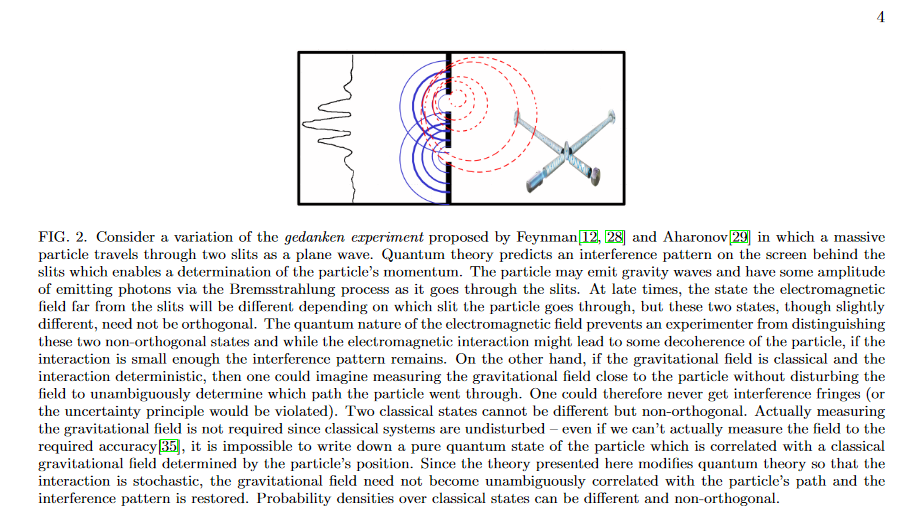2 Answers sorted by
71
I have a lot of respect for Jonathan Oppenheim, having read his papers for some time, and having met him a couple of times a long time ago, so no "obvious reasons to dismiss this out of hand". However I would estimate the odds of this model to be an advancement toward a more accurate description of merging quantum with gravity quite low. The main reason being that it is... not crazy enough. I remember reading the paper when it came out, and there was no wow factor there, no "holy ****, this is a completely new perspective, a unique insight!" And some kind of paradigm shift is most likely required to make progress on the problem that has been baffling the smartest people in the world for 80 years. For comparison, here are some at one time out there ideas in fundamental physics that did not pan out, at least not so far:
- particles are not pointlike objects but tiny rubber bands
- the universe is basically a moving picture
- when all matter eventually becomes radiation, time itself loses meaning, and the universe starts anew
That said, the point that "Gravity itself is non quantum" and that spacetime is emergent is a hot area of research, and is being attempted from multiple directions, some quite encouraging. Also, the analysis part of the paper, that is, why semi-classical gravity is a non-starter, is well worth reading, if you have the background.
20
Outside view: This looks fairly legit on first glance, and Jonathan Oppenheim is a reputable physicist. The theory is experimentally testable, with numerous tests mentioned in the paper, and the tests don't require reaching unrealistically high energies in a particle accelerator, which is good.
Inside view: Haven't fully read the paper yet, so take with a grain of salt. Quantum mechanics already has a way of representing states with classical randomness, the density matrix, so having a partially classical and partially quantum theory certainly seems like it should be mathematically possible in the framework of QM. The paper addresses the obvious question of what happens to the gravitational field if we put a particle in a superposition of locations, and it seems the answer is that there is stochastic coupling between the quantum degrees of freedom and the classical gravitational field, and so particles don't end up losing their coherence in double slit experiments, which would blatantly contradict existing observations.
Overall, I think there's a high chance that this is a mathematically consistent theory that basically does what it says it does. Will it end up corresponding to the actual universe? That's a question for experiment.
it seems the answer is that there is stochastic coupling between the quantum degrees of freedom and the classical gravitational field, and so particles don't end up losing their coherence in double slit experiments, which would blatantly contradict existing observations
Isn't that what he addresses in this section?

That the gravitational field, alone among all fields, should be classical, while all others are quantum, sounds arbitrary. But it's very hard to show experimentally that gravity is quantized (look for papers on detecting a graviton!). So one can get away with supposing that maybe the world works like this.
There are also logical/technical difficulties with the idea. Coupling classical gravity to quantum fields has been done by theorists for a long time - e.g. Hawking made use of this - but only as an approximation. If you have a superposition of field states that should imply different geometries, how can you not have a superposition of geometries? The stochastic dynamics are meant to deal with this - a definite geometry is always being selected, albeit randomly.
At the bottom of the first page, the author points out that a construction like this may even have value as an approximation to fully quantum gravity. I add that in terms of a multiverse framework like e.g. Jim Hartle's, it may even describe the internal dynamics of an individual history, for some physical regimes. The apparent stochasticity would be the manifestation within an individual history, of the phase-space distancing among the many histories, required for mutual decoherence.
This paper proposes a unified theory of gravity and quantum physics which:
of the quantum degrees of freedom with classical space-time necessarily causes decoherence")
Are there any obvious reasons to dismiss this out of hand?
Would have lots of interesting implications (e.g. objective waveform collapse means no multiverse).